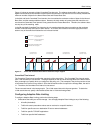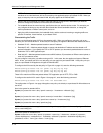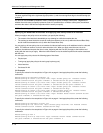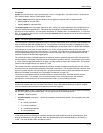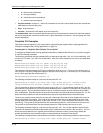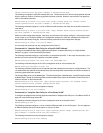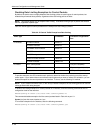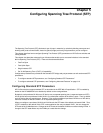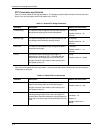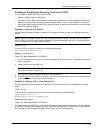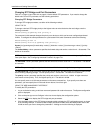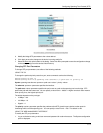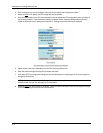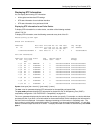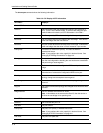
Chapter 5
Configuring Spanning Tree Protocol (STP)
The Spanning Tree Protocol (STP) eliminates Layer 2 loops in networks, by selectively blocking some ports and
allowing other ports to forward traffic, based on global (bridge) and local (port) parameters you can configure.
This chapter describes how to configure Spanning Tree Protocol (STP) parameters on HP ProCurve switches and
routing switches.
This chapter also describes advanced Layer 2 features that enable you to overcome limitations in the standard
802.1d Spanning Tree Protocol (STP). These are the advanced features:
• Fast Port Span
• Fast Uplink Span
• Single-instance STP
• Per VLAN Spanning Tree+ (PVST+) Compatibility
Configuration procedures are provided for the standard STP bridge and port parameters as well as advanced STP
parameters.
• To configure standard STP parameters, see “Configuring Standard STP Parameters”.
• To configure advanced STP parameters, see “Configuring Advanced Features” on page 5-13.
Configuring Standard STP Parameters
HP ProCurve devices support standard STP as described in the IEEE 802.1D specification. STP is enabled by
default on the HP 6208M-SX but is disabled by default on the routing switches.
By default, each port-based VLAN on an HP device runs a separate spanning tree (a separate instance of STP).
An HP device has one port-based VLAN (VLAN 1) by default that contains all the device’s ports. Thus, by default
each HP device has one spanning tree. However, if you configure additional port-based VLANs on an HP device,
then each of those VLANs and VLAN 1 all run separate spanning trees.
When you configure a port-based VLAN, that VLAN inherits the STP state of the default port-based VLAN. Thus,
if STP is enabled on the default VLAN, STP is also enabled on the new port-based VLAN. You can change the
STP state of the VLAN afterwards. Changes to the STP state of the default VLAN do not affect existing VLANs. A
change to the STP state affects only the VLANs you create after the change.
5 - 1



